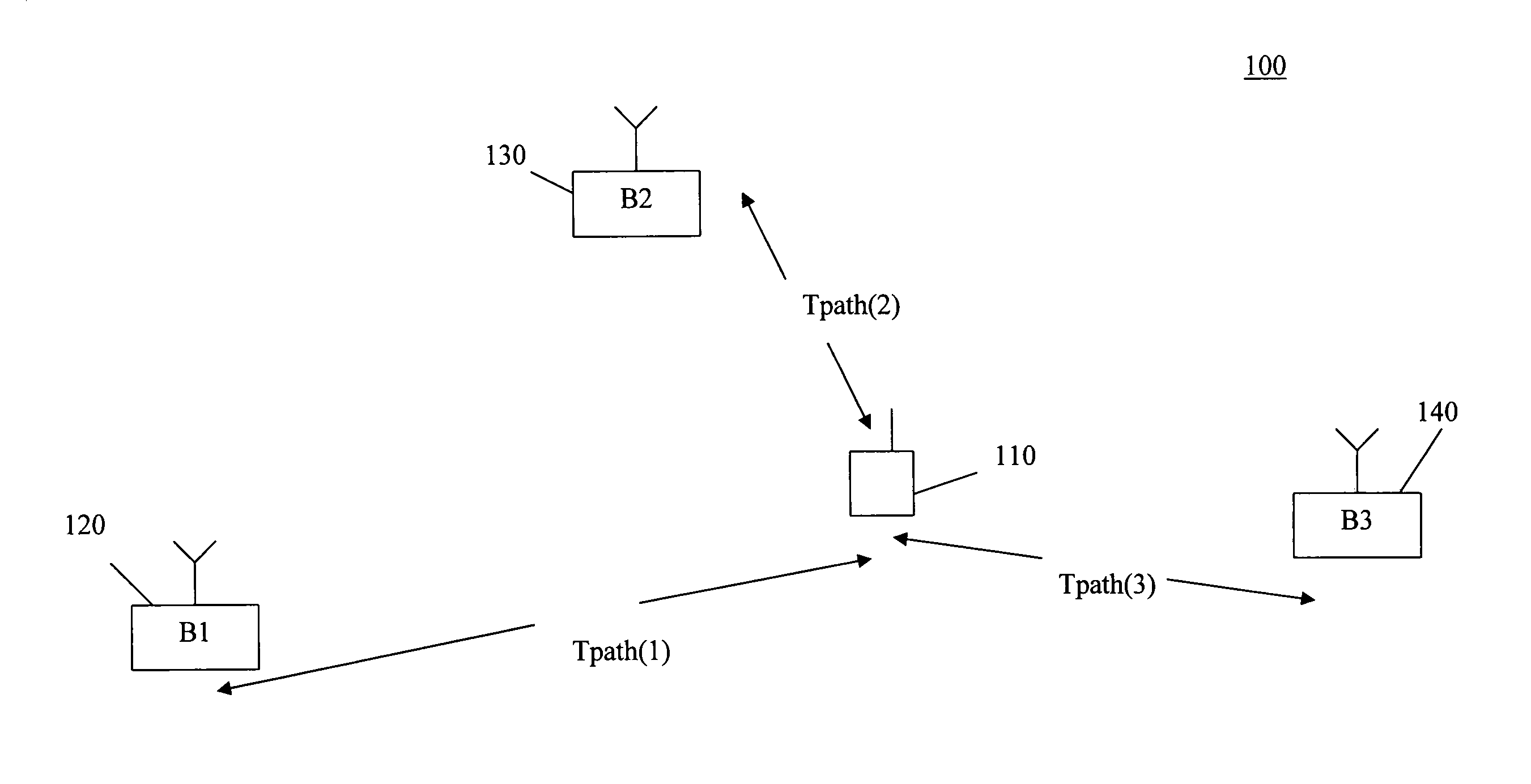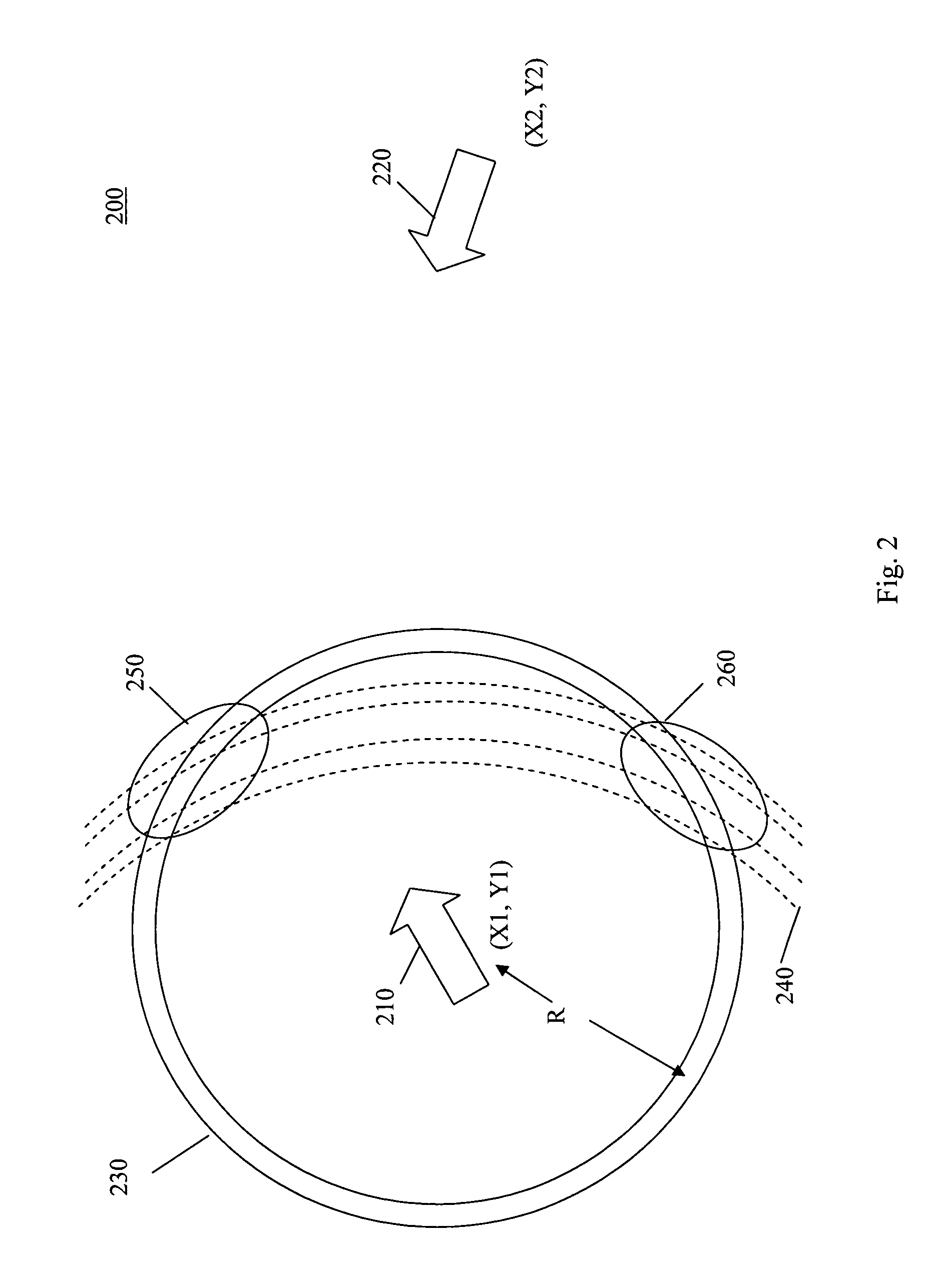Asynchronous wireless communication system
a wireless communication and asynchronous technology, applied in the direction of synchronisation arrangement, instruments, measurement devices, etc., can solve the problems of deprived of key information, geo-location techniques used in synchronous networks cannot be applied directly to asynchronous wireless communication systems, and it is much more difficult to derive a measurement of the location of a wireless communication unit from signal timing information, etc., to achieve the effect of ‘processing gain
- Summary
- Abstract
- Description
- Claims
- Application Information
AI Technical Summary
Benefits of technology
Problems solved by technology
Method used
Image
Examples
Embodiment Construction
[0055]The present invention allows an estimation of the timing offset of base stations in an asynchronous telecommunications network. The present invention may provide an estimation of timing offsets even in asynchronous telecommunications systems, such as UMTS, with timing offsets that are initially unknown, and which change over time.
[0056]Normally, a wireless communication unit can ‘observe’ more than one base station at any given time, i.e., the mobile can receive signals from more than one base station. Equations of the form of [2] and [3]-[5] above can therefore be constructed for the signals received from each base station.
[0057]When a wireless communication unit can receive signals from two base stations simultaneously, the wireless communication unit has two measurements available for the ‘measured time’ Tm. Taking the difference between any two such measurements yields an equation of the form of equation [6] below.
dTm=Tm1−Tm2=dT path+dTb [6]
[0058]Where:
[0059]‘d’ indicates...
PUM
 Login to View More
Login to View More Abstract
Description
Claims
Application Information
 Login to View More
Login to View More - R&D
- Intellectual Property
- Life Sciences
- Materials
- Tech Scout
- Unparalleled Data Quality
- Higher Quality Content
- 60% Fewer Hallucinations
Browse by: Latest US Patents, China's latest patents, Technical Efficacy Thesaurus, Application Domain, Technology Topic, Popular Technical Reports.
© 2025 PatSnap. All rights reserved.Legal|Privacy policy|Modern Slavery Act Transparency Statement|Sitemap|About US| Contact US: help@patsnap.com



